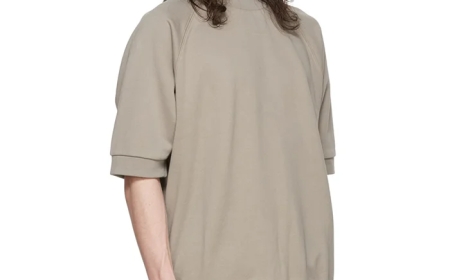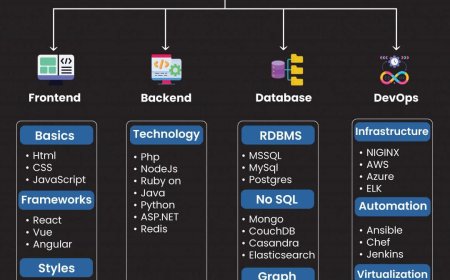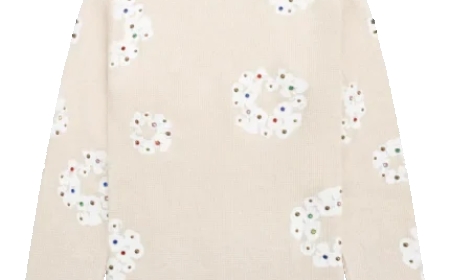How to find the best coffee in Omaha
How to Find the Best Coffee in Omaha Omaha, Nebraska may not be the first city that comes to mind when you think of world-class coffee, but beneath its Midwestern charm lies a thriving, deeply passionate coffee culture. From small-batch roasters tucked into historic neighborhoods to modern third-wave cafés serving pour-overs with precision and artistry, Omaha’s coffee scene has evolved dramaticall
How to Find the Best Coffee in Omaha
Omaha, Nebraska may not be the first city that comes to mind when you think of world-class coffee, but beneath its Midwestern charm lies a thriving, deeply passionate coffee culture. From small-batch roasters tucked into historic neighborhoods to modern third-wave cafés serving pour-overs with precision and artistry, Omaha’s coffee scene has evolved dramatically over the past decade. Finding the best coffee in Omaha isn’t just about locating the nearest café—it’s about understanding the craft, identifying quality indicators, and connecting with the people who pour their soul into every cup. Whether you’re a longtime resident, a newcomer to the city, or a coffee enthusiast visiting for the first time, this guide will equip you with the knowledge and tools to discover coffee that’s not just good—but exceptional.
The importance of seeking out the best coffee goes beyond flavor. High-quality coffee reflects ethical sourcing, environmental stewardship, and community investment. It’s about supporting local businesses that prioritize transparency, sustainability, and craftsmanship. In Omaha, where the coffee community is tight-knit and fiercely proud, knowing how to identify and appreciate excellence means becoming part of a movement that values intention over convenience. This guide will walk you through every step of the process—from researching roasters to tasting with intention—so you can confidently find the best coffee Omaha has to offer.
Step-by-Step Guide
Step 1: Define What “Best” Means to You
Before you begin your search, ask yourself: What makes coffee “best”? For some, it’s bold, chocolatey espresso. For others, it’s a bright, floral Ethiopian pour-over. Some prioritize organic beans, fair-trade certifications, or locally roasted batches. Others value ambiance, barista expertise, or a quiet corner to read. There is no universal standard—only personal preference. Start by listing your top three priorities. Do you want:
- Single-origin beans with traceable farms?
- Dark roasts with low acidity?
- A café with vegan pastries and free Wi-Fi?
- A roastery that offers tours or tasting events?
Clarity here will guide every subsequent decision. If you’re drawn to nuanced, tea-like coffees, you’ll want to avoid places that roast everything dark. If you care about community impact, you’ll prioritize cafés that partner with local farmers or donate proceeds to neighborhood initiatives.
Step 2: Research Local Roasters and Cafés
Omaha is home to over 30 independent coffee roasters and cafés, many of which roast their own beans on-site. Start by compiling a list using trusted local resources:
- Visit Omaha Magazine’s annual “Best of Omaha” list for coffee categories.
- Check Yelp and Google Maps for top-rated spots, but pay attention to recent reviews (within the last 6 months) to avoid outdated information.
- Explore Instagram hashtags like
OmahaCoffee, #OmahaCoffeeScene, or #OmahaRoasters to see real-time posts from locals.
- Join Facebook groups such as “Omaha Coffee Lovers” or “Nebraska Coffee Enthusiasts” to ask for recommendations.
Look for roasters who clearly state:
- Origin of beans (country, region, farm name)
- Roast date (not just “best by” date)
- Processing method (washed, natural, honey)
- Altitude and varietal (e.g., Bourbon, Geisha, Pacamara)
Brands that omit these details are often sourcing commodity beans. Those that embrace transparency are likely invested in quality.
Step 3: Visit Roasteries, Not Just Cafés
While cafés serve excellent coffee, the true heart of Omaha’s coffee scene lies in its roasteries. Roasteries control the entire process—from sourcing green beans to roasting, packaging, and distribution. Visiting a roastery gives you direct access to the source. Many offer:
- Free tastings (cuppings)
- Behind-the-scenes tours
- Direct-to-consumer bean sales
Top roasteries to prioritize include:
- Cooper’s Coffee Co. – Known for their meticulous roast profiles and rotating single-origins.
- Blackstone Coffee Co. – A pioneer in Omaha’s third-wave movement with a focus on sustainability.
- Good Life Coffee Roasters – Offers small-batch, direct-trade beans and monthly subscription boxes.
- Urban Grind Coffee Co. – Roasts in-house and partners with local artists for packaging design.
Call ahead or check their websites for open hours. Many roasteries are open only on weekends or by appointment, especially during peak seasons.
Step 4: Learn to Read Coffee Labels
Not all coffee bags are created equal. To identify quality, scrutinize the packaging. The best coffee in Omaha will display:
- Roast date – Look for beans roasted within the last 2–3 weeks. Coffee peaks in flavor 7–14 days after roasting.
- Origin – Single-origin beans (e.g., “Guatemalan Huehuetenango”) indicate traceability and distinct terroir.
- Processing method – Washed (clean, bright), natural (fruity, bold), or honey (balanced) each produce unique profiles.
- Altitude – Beans grown above 1,200 meters typically have higher acidity and complexity.
- Varietal – Arabica beans (especially heirloom or specialty varietals) are superior to Robusta.
- Certifications – Look for Fair Trade, Organic, or Rainforest Alliance, but don’t rely solely on them. Many small farms don’t afford certifications but still practice ethical farming.
Avoid bags with vague labels like “Premium Blend” or “Rich Roast” without specifics. These are red flags for mass-produced, low-grade coffee.
Step 5: Taste with Intention
Once you’ve selected a coffee, taste it properly. Don’t just sip—engage all your senses:
- Smell – Grind the beans fresh and inhale the aroma. You should detect notes like chocolate, citrus, stone fruit, or floral hints. A flat or stale smell indicates old or poorly stored beans.
- Sip – Let the coffee cool slightly. Slurp it to aerate and spread it across your tongue. Note the body (light, medium, heavy), acidity (bright, sharp, soft), and aftertaste (long or fleeting).
- Compare – Try two different beans side by side. One might be fruity and light; another, earthy and bold. This trains your palate.
- Journal – Keep a simple notebook: date, roast, notes, mood. Over time, you’ll recognize patterns in what you enjoy.
Many Omaha cafés offer tasting flights—small pours of 3–4 different brews. Take advantage. It’s the fastest way to expand your palate and discover your preferences.
Step 6: Ask Questions
Baristas in Omaha’s top cafés are passionate educators. Don’t hesitate to ask:
- “Where are these beans from?”
- “When were they roasted?”
- “What’s your favorite brew method for this one?”
- “Do you have any new arrivals?”
A knowledgeable barista will gladly explain roast profiles, brewing ratios, or even the history of the farm. If they can’t answer, it’s a sign the café may not prioritize quality. The best coffee spots in Omaha treat every customer as a fellow enthusiast, not just a transaction.
Step 7: Explore Neighborhoods
Coffee culture in Omaha is deeply tied to geography. Each neighborhood offers a different vibe and selection:
- Downtown/Old Market – Home to sleek, modern cafés with curated menus and artisanal pastries. Ideal for professionals and visitors.
- Midtown – A hub for independent roasteries and community-focused spaces. Look for pop-up events and live music nights.
- Elmwood – A quiet, residential area with cozy, family-run cafés. Often the most authentic and least touristy.
- West Omaha – Growing rapidly with new roasters opening. Great for discovering emerging talent.
- North Omaha – Rich cultural history with cafés that double as community centers. Often support local artists and youth programs.
Take a coffee crawl. Pick one café per neighborhood on different weekends. Compare the experience—not just the coffee, but the energy, service, and atmosphere.
Step 8: Subscribe or Join a Coffee Club
Many Omaha roasters offer subscription services that deliver freshly roasted beans monthly. This is one of the best ways to consistently access high-quality coffee:
- Good Life Coffee Roasters – “The Omaha Box” includes a rotating selection of single-origins with tasting notes.
- Blackstone Coffee Co. – Offers a “Barista’s Choice” subscription based on your flavor preferences.
- Cooper’s Coffee Co. – Sends seasonal micro-lots you won’t find anywhere else.
Subscriptions often include exclusive access to events, discounts on gear, and early notifications for new releases. They also support consistent cash flow for small roasters, helping them invest in better beans and equipment.
Step 9: Attend Coffee Events
Omaha hosts several annual coffee events that are must-attend for serious enthusiasts:
- Omaha Coffee Festival – Held every spring at the Durham Museum. Features local roasters, brewing workshops, latte art competitions, and live music.
- Barista Showdown – A friendly competition among Omaha’s top baristas. Held at Blackstone Coffee Co. in late summer.
- Roast & Reveal – A monthly tasting series hosted by Good Life Coffee Roasters where customers sample new batches and vote on favorites.
These events are not just fun—they’re educational. You’ll taste rare beans, meet roasters face-to-face, and learn brewing techniques you can replicate at home.
Step 10: Brew at Home with Care
The best coffee in Omaha means nothing if you ruin it at home. Invest in:
- A burr grinder (not blade)—grind size affects extraction.
- Filtered water—tap water with high chlorine or mineral content can mask flavor.
- A gooseneck kettle—for precise pour-over control.
- A scale and timer—to measure ratios accurately (e.g., 1:16 coffee-to-water).
Start with a simple pour-over or French press. Follow the recipe on the bag. Most Omaha roasters include brewing instructions tailored to their beans. Don’t guess—measure.
As you gain confidence, experiment with different methods: AeroPress, Moka pot, cold brew. Each reveals different dimensions of the same bean.
Best Practices
1. Prioritize Freshness Over Brand Name
Even the most famous roasters can’t compensate for stale beans. Always check the roast date. Coffee is a perishable product—its peak flavor window is narrow. Buy in small quantities (no more than a two-week supply) and store beans in an airtight container away from light, heat, and moisture. Never refrigerate or freeze coffee unless you’re storing it for months (and even then, it’s not ideal).
2. Support Independent Roasters
Large chain coffee shops often source beans from global conglomerates with little regard for origin or ethics. Independent roasters in Omaha, by contrast, build direct relationships with farmers, pay premium prices, and reinvest profits into their communities. Choosing them supports economic diversity and sustainable agriculture.
3. Learn the Language of Coffee
Understanding terms like “body,” “acidity,” “aftertaste,” and “terroir” allows you to communicate your preferences and make informed choices. Read books like “The World Atlas of Coffee” by James Hoffmann or follow YouTube channels like “James Hoffmann” or “Coffee with Kyle.” Knowledge transforms tasting from a habit into a ritual.
4. Don’t Judge by Ambiance Alone
A beautifully designed café with marble counters and Edison bulbs doesn’t guarantee great coffee. Some of Omaha’s best brews come from unassuming storefronts or converted garages. Focus on the beans, the barista’s knowledge, and the taste—not the decor.
5. Give New Cafés a Chance
Omaha’s coffee scene is dynamic. New roasters open every year. A café that opened six months ago might be using beans you’ve never tasted before. Don’t default to the same place out of habit. Explore. Be curious.
6. Be Mindful of Sustainability
Ask if the café uses compostable cups, offers discounts for reusable mugs, or recycles grounds. Many Omaha roasters compost their own waste or partner with local gardens. Supporting eco-conscious businesses amplifies the positive impact of your coffee habit.
7. Don’t Over-Order Additives
Black coffee reveals the true character of the bean. If you always order lattes with flavored syrups, you’ll never learn to appreciate nuanced flavors like blueberry, jasmine, or molasses. Try drinking your coffee plain first. Then, if you want to add milk or sugar, do so intentionally—not out of habit.
8. Build Relationships
The best coffee experiences in Omaha come from connection. Get to know your barista. Learn their name. Remember their favorite brew. Share your own discoveries. These relationships turn a simple purchase into a meaningful ritual—and often lead to insider tips, early access to new releases, or invitations to exclusive events.
Tools and Resources
Online Directories
- Omaha Coffee Map – A community-maintained interactive map listing all independent cafés and roasteries with user reviews and roast dates.
- Specialty Coffee Association (SCA) Directory – Lists certified coffee professionals and roasters in Nebraska.
- BeanBox – A subscription service that curates local roasters from across the U.S., including several Omaha-based ones.
Mobile Apps
- Untappd – Originally for beer, but increasingly used by coffee lovers to log and rate brews. Search “coffee” and filter by Omaha.
- Google Maps – Use the “Coffee” category and sort by “Highest Rated” or “Newest.” Filter by “Open Now” or “Has Outdoor Seating.”
- Instagram – Follow hashtags like
OmahaCoffee, #NebraskaCoffee, and #OmahaRoaster. Save posts from cafés you want to visit.
Books and Media
- The World Atlas of Coffee by James Hoffmann – A comprehensive guide to origins, processing, and brewing.
- Coffee: A Comprehensive Guide to the Bean, the Beverage, and the Industry by Robert W. Thurston – Academic but accessible.
- “The Coffee Roaster’s Companion” by Scott Rao – For those interested in the science of roasting.
- Podcasts – “The Coffee Compass,” “The Daily Grind,” and “Coffee with Kyle” all feature interviews with Omaha roasters.
Equipment Recommendations
For home brewing, invest in these essentials:
- Burr Grinder – Baratza Encore or Fellow Ode
- Gooseneck Kettle – Hario V60 Buono or Fellow Stagg EKG
- Scale – Acaia Pearl or Escali Primo
- French Press – Espro P7 or Frieling
- Pour-Over Set – Chemex or Kalita Wave with filters
- Storage – Airscape or Fellow Atmos canisters
These tools cost less than $300 total and will elevate your home brewing far beyond drip machines or single-serve pods.
Real Examples
Example 1: The Coffee Crawl That Changed Everything
Emily, a transplant from Seattle, moved to Omaha in 2022 and was disappointed by the coffee options. She followed the steps in this guide:
- She started by visiting Cooper’s Coffee Co. and tried their Ethiopian Yirgacheffe. Notes of bergamot and jasmine stunned her.
- She then went to Blackstone Coffee Co. and learned about their direct-trade partnership with a women-led farm in Colombia.
- At Good Life Coffee Roasters, she attended a cupping and discovered her preference for natural-processed beans.
- She subscribed to their monthly box and began brewing at home with a Chemex.
- By month three, she was hosting coffee tastings for friends and even started a blog reviewing Omaha’s coffee scene.
“I didn’t just find good coffee,” she says. “I found a community. And now I can’t imagine living anywhere else.”
Example 2: The Hidden Gem in Elmwood
On a quiet street in Elmwood, you’ll find Midnight Sun Coffee. It has no website. No social media. Just a small window, a chalkboard menu, and a man named Tom who roasts beans in a 1950s drum roaster in the back. He sources directly from a farm in Oaxaca and sells beans for $14 a bag. No labels. Just handwritten notes on the bag: “Harvested Oct 2023. Natural. 1,400m. Bourbon.”
Emily, the Seattle transplant, stumbled upon it by accident. She asked Tom how he got the beans. He smiled and said, “I fly down there every year. We drink coffee together before I pick them.”
That bag of beans—simple, unadorned, and deeply personal—became her favorite. It taught her that the best coffee isn’t always the most visible. Sometimes, it’s the quietest.
Example 3: The Roastery That Grew from a Garage
Urban Grind Coffee Co. began in 2018 as a one-person operation in a garage in West Omaha. Founder Marcus Lee roasted beans on a $500 machine and sold them at farmers markets. Today, he has a 3,000-square-foot facility, a team of seven, and his beans are served in over 40 local restaurants.
His secret? “I talk to the farmers. I taste every batch. I let the bean tell me how to roast it.”
His “Midnight Blend” is now a city-wide favorite—a dark roast with notes of dark cherry and smoked almond, roasted just enough to preserve sweetness without bitterness.
Urban Grind’s journey proves that Omaha’s coffee scene thrives on passion, not profit.
FAQs
What’s the most popular coffee in Omaha?
There’s no single “most popular” coffee, but medium roasts with bright acidity and floral or citrus notes—particularly from Ethiopian and Kenyan origins—are trending. Many locals favor single-origin pour-overs or cold brews made with natural-processed beans.
Is there good coffee in Omaha chain stores like Starbucks or Dunkin’?
Chain stores serve consistent, mass-produced coffee. It’s not bad, but it lacks the complexity, freshness, and ethical sourcing found in Omaha’s independent roasters. If you’re seeking excellence, skip the chains.
How do I know if my coffee is fresh?
Check the roast date. Fresh coffee should be roasted within the last 14–21 days. The beans should smell aromatic, not flat or musty. When ground, they should release a burst of fragrance—not a dull, papery scent.
Should I buy whole bean or pre-ground coffee?
Always buy whole bean. Grinding releases volatile aromatics, and pre-ground coffee loses flavor rapidly. Even the best beans become dull if ground too far in advance.
What’s the best time of day to visit a coffee shop in Omaha?
Weekday mornings (8–10 a.m.) are ideal for quiet, unhurried service. Weekends are busy but offer more events and live music. Avoid lunch rushes unless you’re okay with waiting.
Can I visit a roastery without buying coffee?
Yes. Most roasteries welcome visitors for tastings or tours—even if you don’t purchase. It’s a chance to learn. Many offer free samples if you ask.
Do Omaha coffee shops serve food?
Many do, but focus on quality. Look for bakeries that make pastries in-house using local ingredients. Avoid places that serve mass-produced muffins or frozen croissants.
Are there vegan or dairy-free options?
Yes. Nearly every independent café offers oat, almond, soy, or coconut milk. Some even offer house-made oat milk or cashew cream.
How much should I expect to pay for good coffee in Omaha?
A bag of specialty coffee typically costs $16–$24. A single pour-over at a café runs $4–$7. While this may seem expensive compared to chain coffee, it reflects the cost of ethical sourcing, small-batch roasting, and skilled labor.
Can I order Omaha coffee online if I don’t live there?
Yes. Nearly all Omaha roasters ship nationwide. Look for “free shipping” promotions during holidays or subscribe for regular deliveries.
Conclusion
Finding the best coffee in Omaha isn’t a destination—it’s a journey. It’s about curiosity, patience, and connection. It’s learning to taste the difference between a bean grown on a high-altitude farm in Ethiopia and one harvested in the foothills of Colombia. It’s understanding that a perfect cup isn’t the result of machinery alone, but of human hands—farmers, roasters, baristas—who pour care into every step.
Omaha’s coffee scene is still growing, still evolving. It’s not yet as loud or as famous as Portland or Seattle, but it’s more intimate, more authentic, and more deeply rooted in community. The best coffee here doesn’t come from marketing campaigns or glossy packaging. It comes from conversations in quiet corners, from baristas who remember your name, and from roasters who wake up at 4 a.m. to perfect a roast.
So take your time. Visit one café this week. Try a new origin. Ask a question. Taste slowly. Let the flavor unfold. You don’t need to be an expert to appreciate excellence—you just need to be willing to look for it.
And when you find that perfect cup—the one that makes you pause, close your eyes, and think, “This is why I love coffee”—you’ll realize Omaha has been waiting for you all along.





















